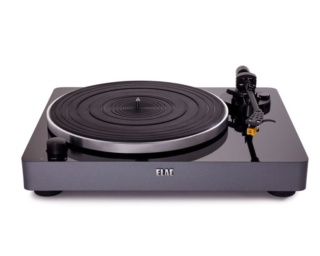
But even compared to rear mounted DIP switches, this makes load setting easy. There are no fixed MC load settings but with the front panel screen monitoring your rear panel knob turning, this set-up, in addition to giving you a nearly infinite range of load settings (from 5 Ohms to 1kOhms) is at least, if not more convenient than fixed loads set via a DIP switch-especially if it’s mounted inside the chassis. Either of the two inputs via a rear panel mounted DIP switch can be configured for MM loaded or for variably loaded MC. The PPA-2 has two independently adjustable inputs, one of which-unusual at this price point-features a choice of single-ended RCA or balanced XLR in. The PPA-2 also features a few innovations not found on the PPA-1 like continuously variable loading, monitored via a front panel screen. While the current PPA-2 does not have the PPA-1s elegant casework, it’s also $500 less expensive yet has much of the PPA-1’s performance and feature set including fully discrete FET based gain and EQ stages as well as a DC servo-controlled output stage (meaning no sound damaging coupling capacitors in the signal path). The ELAC purchase has allowed Madnick to design here and built in China, bringing with it, products designed to his exacting specs but priced lower. While Audio Alchemy’s mission was more or less to figure out and fix what was wrong with the sound of “perfect” digital audio (and the company’s many innovations made major improvements, particularly in terms of jitter reduction), it also produced headphone amps and phono preamps among other well-regarded, reasonably priced products.Īudio Alchemy re-launched in 2015 with another line of innovative, affordable gear including the made in America $1795 PPA-1 phono preamplifier reviewed here in 2016.īut the business side foundered and just around the time we published that PPA-1 review Audio Alchemy was acquired by ELAC an almost 100 year old company founded in Germany that again, some of you know from the Benjamin Miracord ELAC turntables marketed during the 1960s and ‘70s. With Madnick designing and the business side run by Mark Shifter-a guy who could sell ham to a Hasid-Audio Alchemy had a formidable, decade long run before it folded. If you are going to pass on the 50H, let me know and I'll find a home for it.ELAC Alchemy designer Peter Madnick is well-known to veteran audiophiles as the man behind, among other companies, Audio Alchemy, the “high end” brand that during the 1990s made high performance affordable. You can get the table rebuilt to pratically brand new condition at.

ELAC MIRACORD 46 TURNTABLE MOD
My system is extremely revealing (Apogee Studio Grands, Mod Squad Phono Drive, & Reference Line Electronics)and I hear no signs of mistracking on my 50H, 750MKII, or 50HII when I have taken the time to set the table up like any other high end table. The resulting sound is DEFINATELY high end and will shame any CD player under $500. The overhang gage on the table is quite accurate and some of the headshells even have a VTA adjustment. You should also replace the interconnects with a modern, high quality, low capacitance pair.


I suggest the Blue or the Red for the 50H.

ELAC MIRACORD 46 TURNTABLE SERIES
The Grado Prestige series are particularly good matches for the Elac 50, 750 & 770 series tables. I've spent about a year collecting & refurbishing old Elac, BSR, and Dual tables and I'm constantly astonished at how good they can sound when properly set up.įor the higher mass Elac arms a lower compliance cartridge is generally the rule. Like any other table it's finding the right combination of arm ,cartridge, & deck. Assuming the table is in good condition, the only thing you'll be giving up to higher priced tables is rumble and the ability to track some of the higher end cartridges. Have to disagree with the above response.


 0 kommentar(er)
0 kommentar(er)
